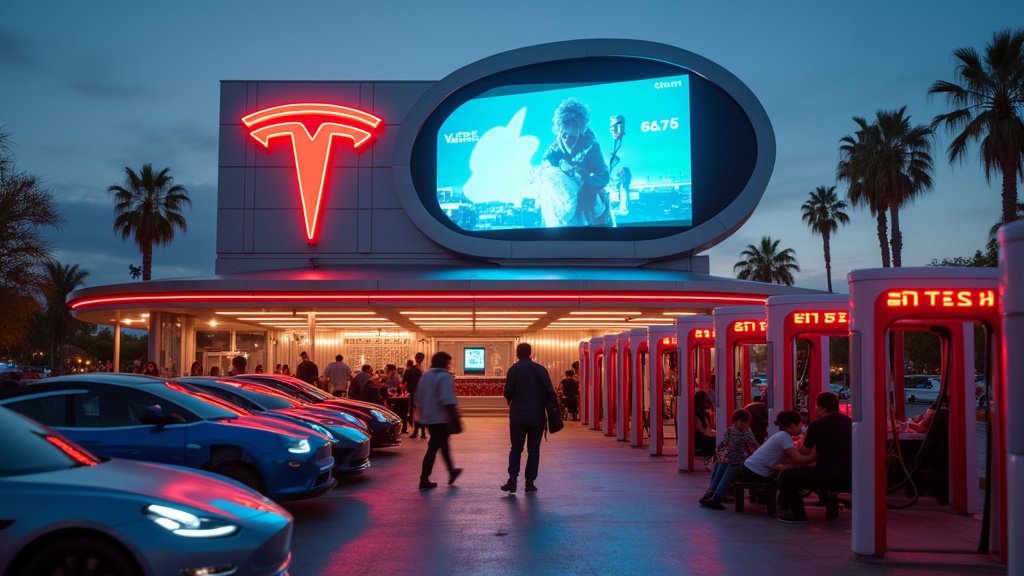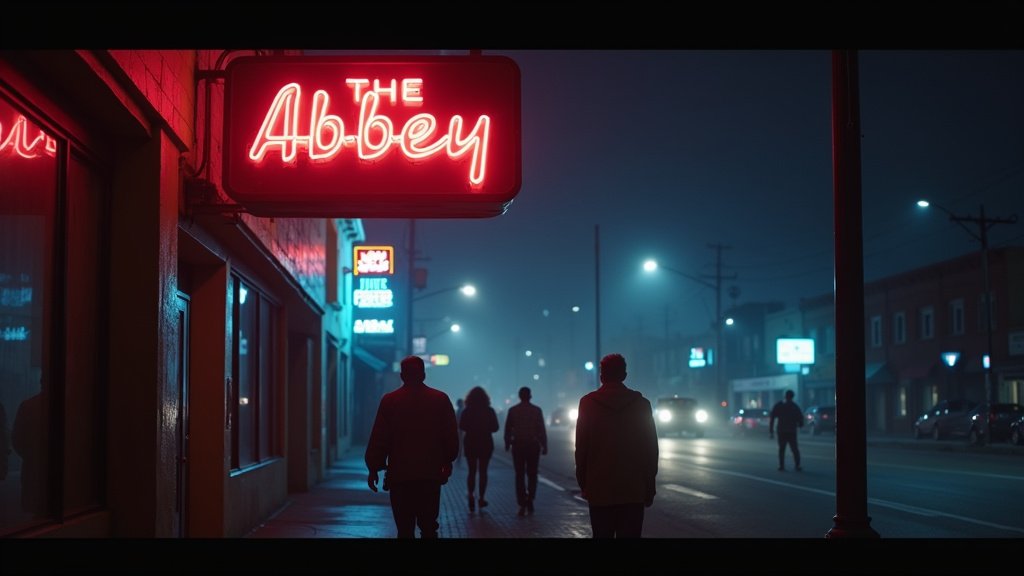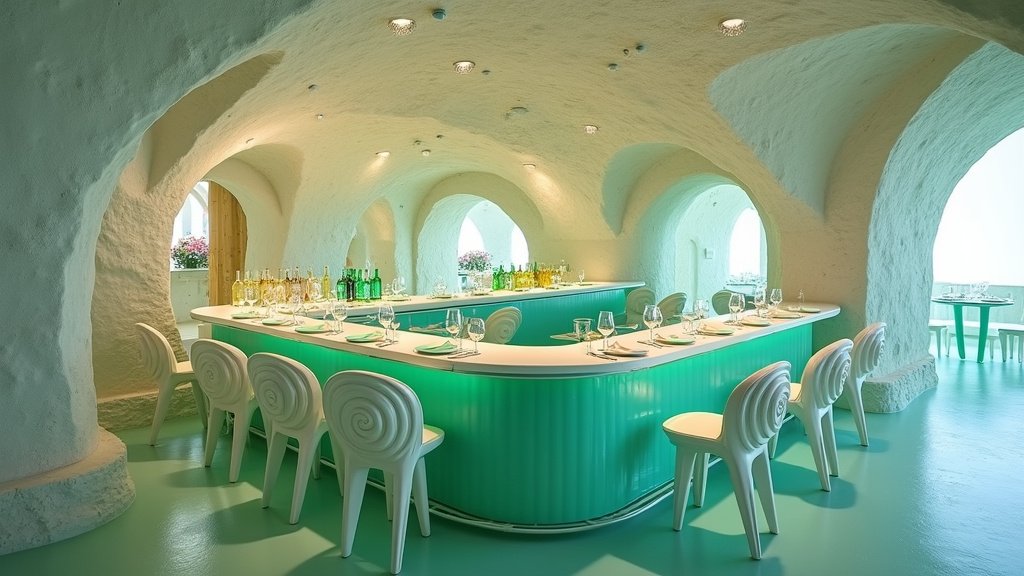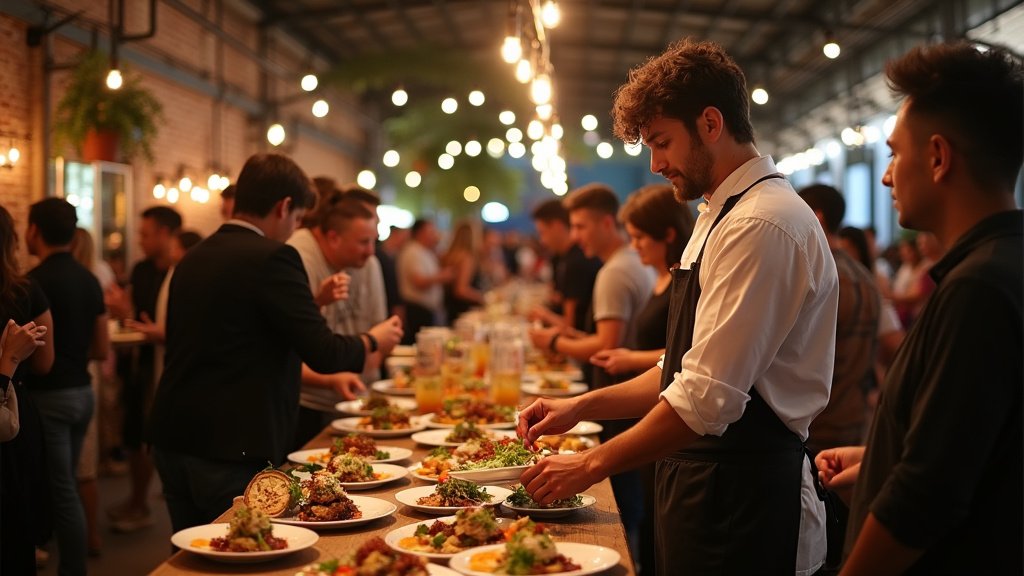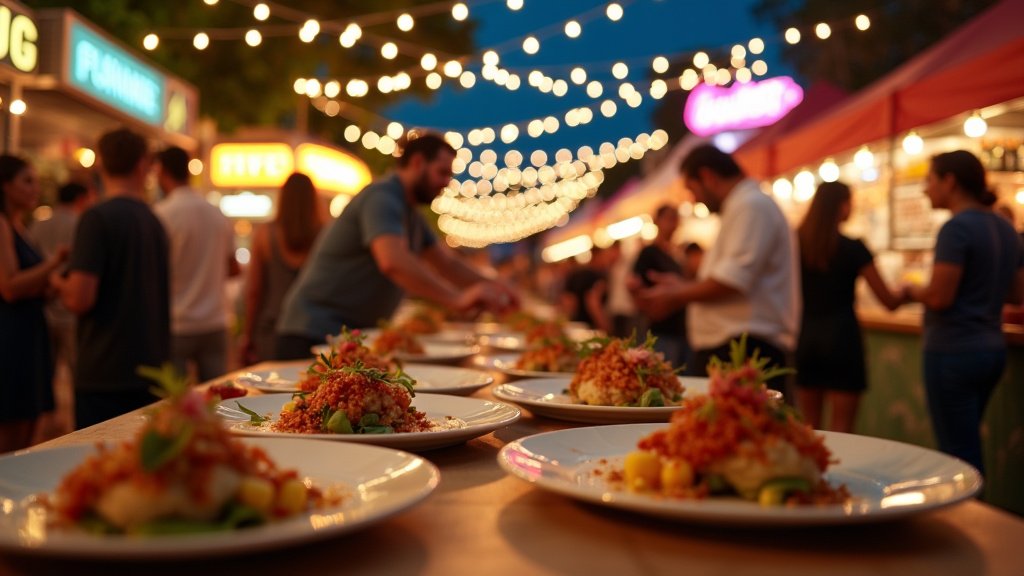West Hollywood, a vibrant nexus of culture and cuisine, has welcomed a new, ambitious establishment: the Tesla Diner. More than just a place to eat, this sprawling facility combines electric vehicle charging, a drive-in theater, and a retail space, all wrapped in a retro-futuristic aesthetic. Since its July opening, the diner has quickly become a magnet for Elon Musk enthusiasts and a significant talking point in the Los Angeles area’s dynamic restaurant news, drawing both fervent fans and local criticism.
The Retro-Futuristic Concept
Dubbed the largest urban Supercharging station in the world, the Tesla Diner boasts 80 V4 charging stalls and operates 24/7. Designed by Stantec, the circular, stainless-steel structure evokes mid-century Americana with a futuristic twist. Inside, guests find a 250-plus seat dining area, featuring curved counters and custom seating, alongside a rooftop “Skypad” offering city views and entertainment. Two massive 66-foot LED megascreens broadcast movies and special content, accessible either from the diner itself or from within patrons’ Tesla vehicles via the Tesla Diner app. The menu, curated by Chef Eric Greenspan, offers classic American diner fare like smash burgers and milkshakes, presented in distinctive Cybertruck-inspired packaging. Solar canopies further enhance the sustainable appeal, contributing to an estimated annual reduction of millions of pounds of CO2 emissions.
A Hub for the Faithful
From its inception, the Tesla Diner was envisioned as more than a service stop; it’s a pilgrimage site for fans of Elon Musk and his ventures. The establishment has become a favored destination for Tesla fan club meetups and events, such as Cybertruck light shows. For many visitors, it represents an immersive experience into the Tesla brand and Musk’s vision for the future, blending technology, automotive culture, and a social gathering space.
Operational Growing Pains and Mixed Reviews
Despite the initial excitement, the diner’s launch has been characterized by significant operational challenges. Reports emerged of extreme wait times, with some customers waiting up to 11 hours, a situation exacerbated by technical glitches with the ordering app and a prioritization of Tesla owners. Chef Eric Greenspan himself described the opening weeks as “wild, crazy and unprecedented,” leading to menu adjustments, including streamlining popular items and cutting those that slowed down the kitchen. While some visitors found the food “excellent” or “worth it” for the unique packaging, others described it as “mediocre” and served cold, with some parts of the experience reportedly “breaking down.”
Local Friction and Protests
The diner’s massive popularity has also created considerable friction within the West Hollywood community. Residents have voiced strong complaints regarding increased traffic congestion, noise pollution, and parking issues. The diner’s EV-charging-only parking policy forces those in gas-powered cars to seek street parking, contributing to neighborhood gridlock. Furthermore, the venue has become a focal point for protests organized by groups like “Tesla Takedown.” These demonstrations often target Elon Musk’s political activities and statements, including his role in the Trump administration, alleged government spending cuts, and controversial social commentary. Protesters have gathered with signs and inflatable effigies, calling for Tesla boycotts and denouncing Musk’s influence. Elon Musk himself has publicly dismissed these protests as “paid attacks.” A public safety incident also occurred when a rooftop patio fixture reportedly fell, injuring a customer, with a lawsuit reportedly pending.
West Hollywood’s Dynamic Culinary Landscape
The Tesla Diner’s arrival occurs within the context of West Hollywood’s constantly evolving restaurant scene. Known for its diverse culinary offerings, the city features everything from upscale dining to casual eateries, with new spots like the upcoming Japanese Gyoza Bar adding to its gastronomic tapestry. Meanwhile, the broader Los Angeles area continues to showcase trends like the rich diversity found in the San Fernando Valley’s eateries. Technologically, the food industry is also seeing advancements, with AI-powered robotics emerging for tasks like fish preparation, hinting at broader shifts in how food is created and served.
Conclusion
The Tesla Diner in West Hollywood is a bold statement, a gathering place that embodies both the fervent adoration and the sharp criticism often directed at Elon Musk. It serves as a testament to Tesla’s ambition to innovate beyond vehicles, creating an experience that caters to its most dedicated fans. However, its rapid ascent has been marked by operational hurdles and significant community backlash, highlighting the complex interplay between disruptive technology, public figures, and the everyday realities of urban life. As the diner settles into its role, its ultimate success will depend on its ability to balance its visionary appeal with operational stability and community harmony in the bustling Los Angeles food scene.

